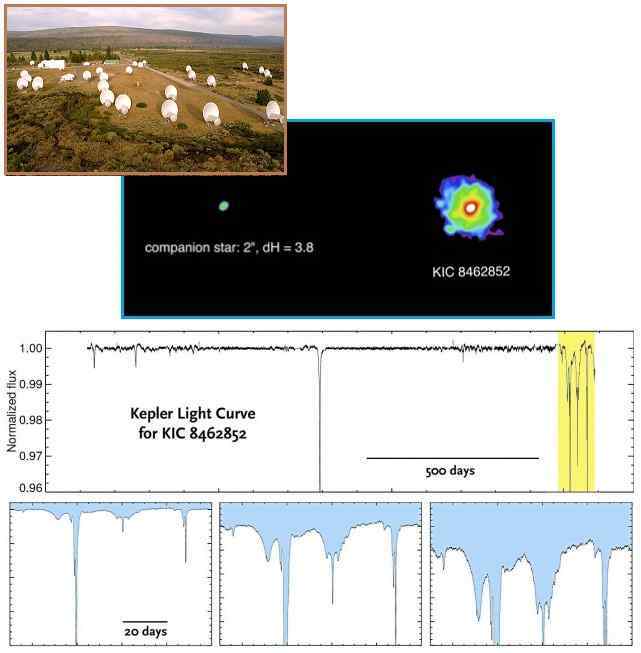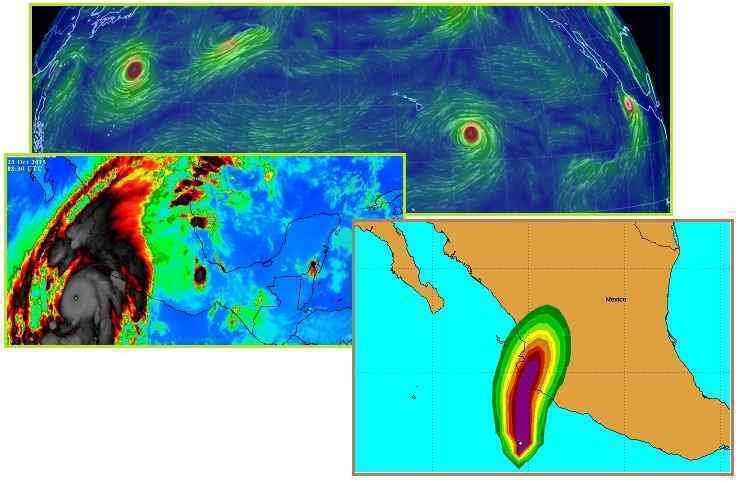
| |
 |
ZetaTalk Chat Q&A for October 24, 2015
What does this orbit imply? [and from another] http://sputniknews.com/art_living/20151020/1028782314/Hazardous-Asteroid-Approaches-Earth-Halloween.html “The asteroid is on an extremely eccentric and a high inclination orbit,” NASA said in a statement, explaining why the asteroid had previously gone unobserved. [and from another] http://www.huffingtonpost.com/2015/10/20/asteroid-earth-halloween_n_8343630.html While the asteroid, dubbed 2015 TB145, does not present a threat, it will come within 310,000 miles of Earth -- nearly as close as our own moon -- and zoom past at an "unusually high" speed of more than 78,000 miles per hour. [and from another] https://gma.yahoo.com/halloween-asteroid-close-pass-earth-202613289--abc-news-Halloween.html An asteroid that was only just discovered on Oct. 10 is set to whiz past Earth on Halloween, marking the closest encounter our planet has had with one of the massive speeding rocks since 2006, according to NASA. [and from another] http://echo.jpl.nasa.gov/asteroids/2009FD/2009FD_planning.html The asteroid is in an extremely eccentric (~0.86) and high inclination (~40 deg) orbit. It has a Tisserand parameter of 2.937 hinting that it may be cometary in nature. The encounter velocity is 35 km/s, which is unusually high. [and from another] http://www.zetatalk.com/newsletr/issue330.htm In November, 2011 asteroid YU55 came within 220,000 miles of Earth, within the orbit of the Moon. Then in June, 2012 asteroid LZ1 came within 14 lunar distances of Earth. On January 8, 2013 asteroid Apophis came within 9,000,000 miles of the Earth, close enough for inspection.
Asteroids making a close pass have increasingly been in the news, for
several reasons. The establishment knows that the public has, at least
subconsciously, become aware of an increase in bolides, fireballs,
screaming across the skies. At first this was claimed to be falling space
junk but this migrated to no comment whatsoever in the news, an attempt to
ignore these incidents. With open knowledge about the pending passage of
Nibiru, and open discussion about the debris and even moons in the swirling
tail, the new approach will instead be as honest as possible. TB145
is a case in point.
The second reason the issue is in the news is to stave off questions from
the public on what can be done about a possible strike, perhaps even an
extinction level event (ELE). There is, of course, nothing the
establishment can do about this bombardment, which will only increase. In
the past, there was posturing that a defense such as Spaceguard could be
erected, rebuffing asteroids and sending them in another direction. These
types of reassurances are no longer being issued, as no such defense by
man and his technology is possible. Other than giving the stage to Nancy
to showcase ZetaTalk accuracy, and the Zeta
reassurance that an ELE will not be allowed, there is no answer to
give the public.
Will Zetas comment on this Kepler search for what causes its periodic dimming? A possible explanation of mega-structures has been mentioned along with more conventional explanations like a comet swarm. [and from another] http://www.space.com/30855-alien-life-search-kepler-megastructure.html?cmpid=514630_20151019_54154146&adbid=10153117810936466&adbpl=fb&adbpr=17610706465 Search For Intelligent Aliens Near Bizarre Dimming Star Has Begun. October 19, 2015. Astronomers have begun using the Allen Telescope Array (ATA), a system of radio dishes about 300 miles (483 kilometers) northeast of San Francisco, to hunt for signals coming from the vicinity of KIC 8462852, a star that lies 1,500 light-years from Earth. NASA's Kepler space telescope found that KIC 8462852 dimmed oddly and dramatically several times over the past few years. The dimming events were far too substantial to be caused by a planet crossing the star's face, researchers say, and other possible explanations, such as an enormous dust cloud, don't add up, either. The leading hypothesis at the moment involves a swarm of comets that may have been sent careening toward KIC 8462852, possibly after a gravitational jostle by a passing star. But it's also possible, astronomers say, that the signal Kepler saw was caused by huge structures built by an alien civilization — say, a giant assortment of orbiting solar panels. [and from another] http://www.universetoday.com/122865/whats-orbiting-kic-8462852-shattered-comet-or-alien-megastructure/ Whatever’s causing the flickering can’t be a planet. With great care, the researchers ruled out many possibilities: instrumental errors, starspots (like sunspots but on other stars), dust rings seen around young, evolving stars (this is an older star) and pulsations that cover a star with light-sucking dust clouds. [and from another] http://www.skyandtelescope.com/astronomy-news/curious-case-of-kic-8462852-102020155/ The drop in starlight is usually brief (hours long) and precisely repetitive. But the light dips seen in a target star designated KIC 8462852 don't fit that paradigm at all. Early in the mission, Planet Hunters volunteers spotted a dip of just 0.5% that last for an incredible 4 days. Over time, the behavior of this now-suspect star got more and more bizarre. The recorded dips were ragged and irregular, sometimes shallow but sometimes blocking up to 20% of the star's light — and their timing was unpredictable. [and from another] http://scienceblogs.com/catdynamics/2015/10/19/kic-8462852-whence-the-fading-star/ Interesting it was. The star, an F3 main sequence star, apparently a quiet middle aged normal star, somewhat more luminous than the Sun, is dimmed, but a large amount, 10-20%, for many days, in irregular patterns and in asymmetric ways. For comparison, the shadows of planets dim stars typically by somewhere between 1% and 0.0001%, or less, and for hours or a day or two, not weeks.

There are two mysteries here, both easily solved. The first is why a
winking star would cause the media to immediately leap to the conclusion
that aliens exist and had built a structure around this star to suck up
its energy, kind of like a giant solar panel. Disclosure
over the alien presence has been in process for years, pressed by
notables giving testimony. But given the battle Obama has had over
admitting that Nibiru exists and is nearby, engaging directly in the
battle to admit the alien presence has been delayed. Reagan Executive
Orders forced both these issues to become national security issues, thus
the long running cover-ups. A creeping disclosure has resulted.
The second mystery is why this star is winking. There seems to be no
precise period for the winks, though rough patterns fall into 500 days for
massive outages and 20 day periods for minor dips. The fact that light
rays bend readily, and pull to gravity sinks, is well known. The rising or
setting Sun appears huge at the moment it is just over the horizon, for
this reason. Someone wading in the water will find their feet several
inches to the side, and light bends when going through a prism for this
reason. Planets orbiting a star certainly have gravity, and are often
identified by apparent perturbations that are merely bent light.
This Kepler star, and its orbiting satellites, are all massive gravity
sinks. Gravity particles, as we have stated, drop into a sink and then
explode outward in laser like bursts periodically. Thus the Bermuda
Triangle disappearances, as this area is one subject to major outbursts,
forcing ships and planes into 4th density when it occurs. Thus the Moon
kept up in the sky, though it is too heavy and moving too slowly to be
there other than by gravity outbursts from the Earth. We have called this
the Repulsion Force. The gravity
particles in play at this Kepler star and its satellites do not escape the
environment, as they are pulled and pushed in and out of KIC 8462852, but
they certainly are sufficient to create a wink, in man’s view.
That means there are 3 hurricanes in the pacific right now one by Japan, one by Hawaii and another by the W. coast of S. America
http://earth.nullschool.net/#current/wind/isobaric/850hPa/orthographic=-170.26,4.82,446 [and from another] http://thevane.gawker.com/at-200-mph-hurricane-patricia-is-now-the-strongest-tro-1738224692 With measured winds of 200 MPH, Hurricane Patricia became the strongest tropical cyclone ever recorded anywhere on Earth. The previous record-holder for the strongest tropical cyclone ever recorded anywhere on Earth—by wind speed—was Super Typhoon Haiyan, which struck the Philippines with satellite-estimated, one-minute sustained winds of 195 MPH. Hurricane Linda held the old wind record for the eastern Pacific Ocean, packing 185 MPH winds back in 1997. Over in the Atlantic, 1980’s Hurricane Allen still holds the wind speed record, packing one-minute sustained winds of 190 MPH at one point during its life cycle. During the 24-hour period between 4:00 AM CDT on Thursday and 4:00 AM CDT on Friday, Patricia went from an 85 MPH category one to a 200 MPH category five.

Knowing that the Earth wobble would begin after Nibiru entered the inner
solar system in 2003, and knowing that the Earth wobble would worsen as
the Last Weeks approached, we predicted that the ferocity and frequency of
storms would increase. We made this prediction at the start of the
ZetaTalk saga in 1995. In
2005, when this prediction proved correct, the increase in ferocity
and frequency of storms of record, we repeated this prediction and added
that storms will begin to follow each other and even slam into each other,
magnifying the effect. Again in 2013 we
predicted that storms will be on the increase, and stated that if this
causes the populace to move from the coasts, it may be a blessing in
disguise.
As cyclone Patricia suddenly increases in ferocity and approaches the
Mexican coastline, there are two other storms in the northern Pacific.
This cannot be ascribed to anything but the Earth wobble, which will
increasingly kick a cyclone into a higher gear and at the same time create
a void in the air pressure that will provide the breeding ground for
another cyclone. The establishment has predicted a mega El Nino, which of
course comes from the submarine volcanoes heating the Pacific, and this
feeds the development of storms too. What will be the outcome? We
predicted that some coastlines will become uninhabitable, used only for
crops as the time of the passage approaches. This is at hand!